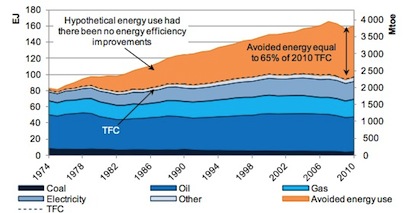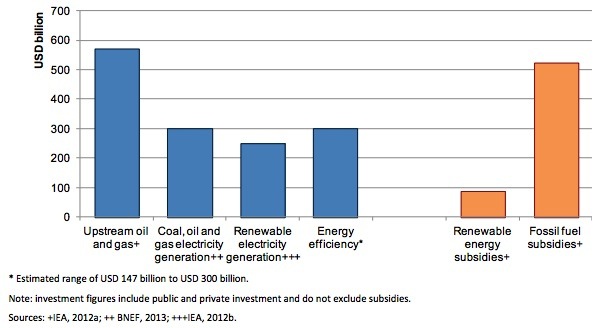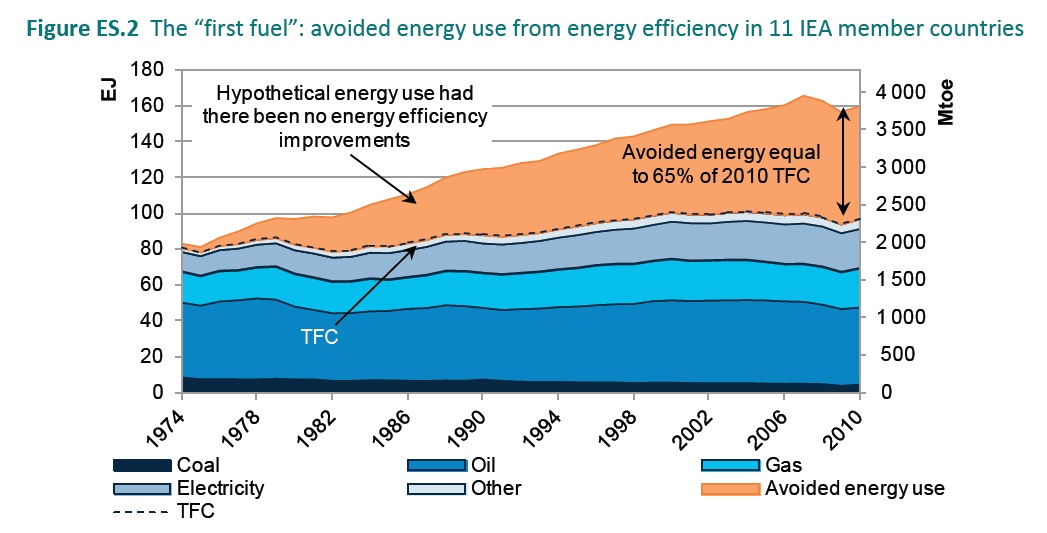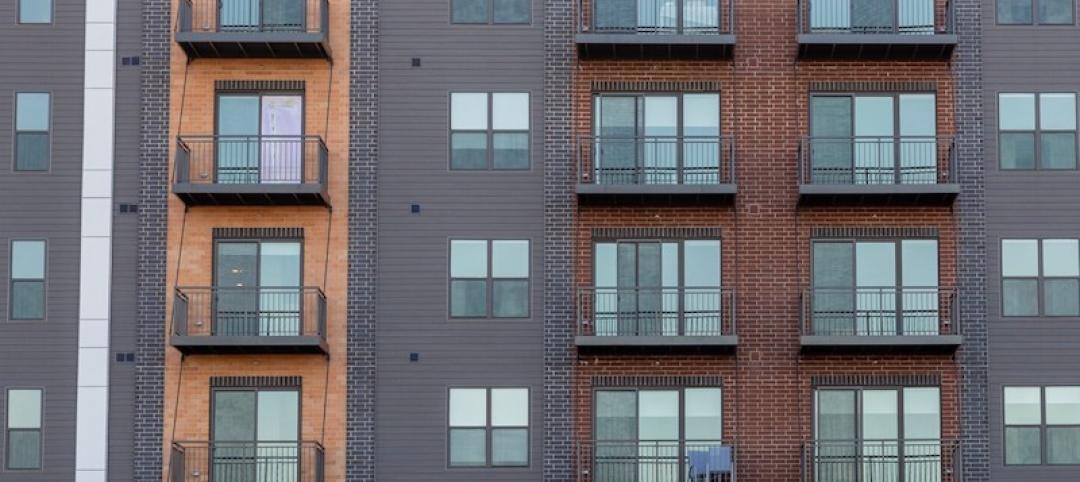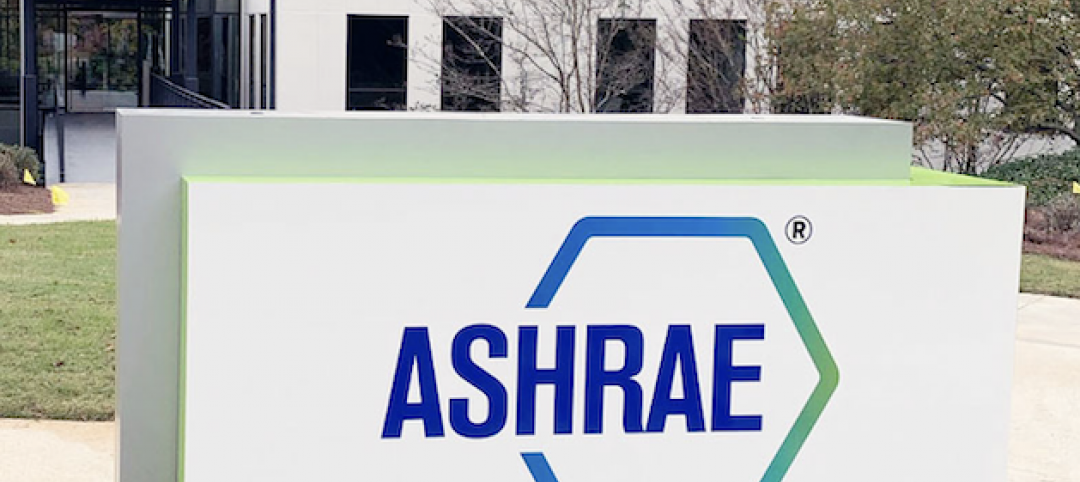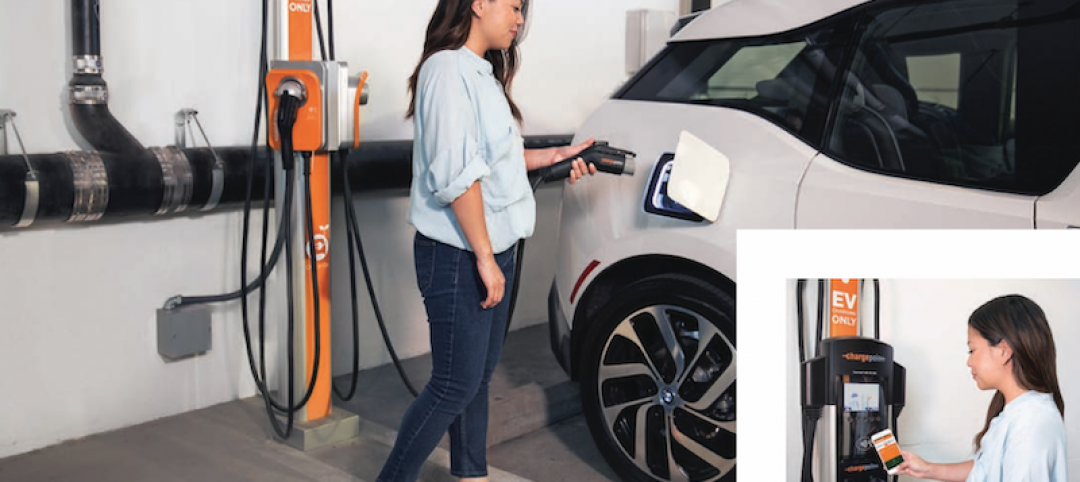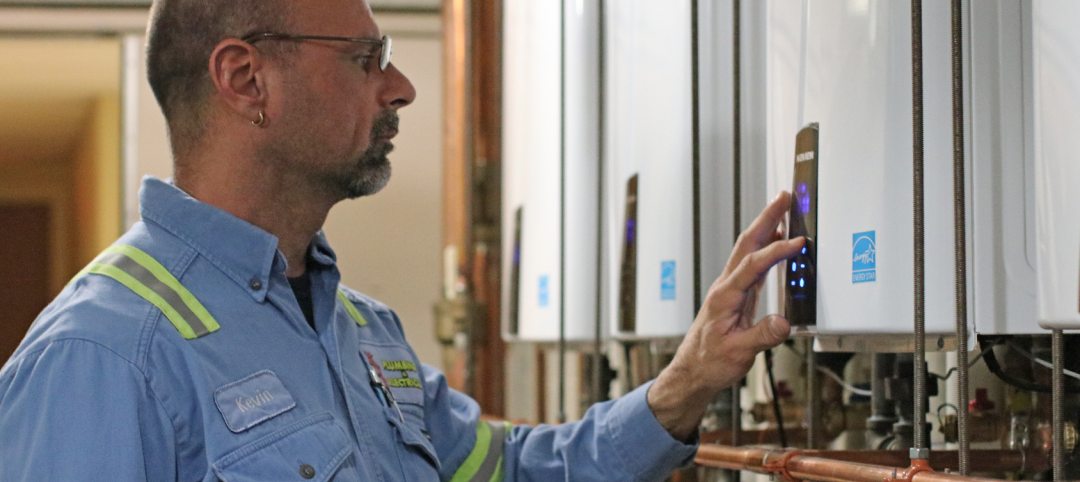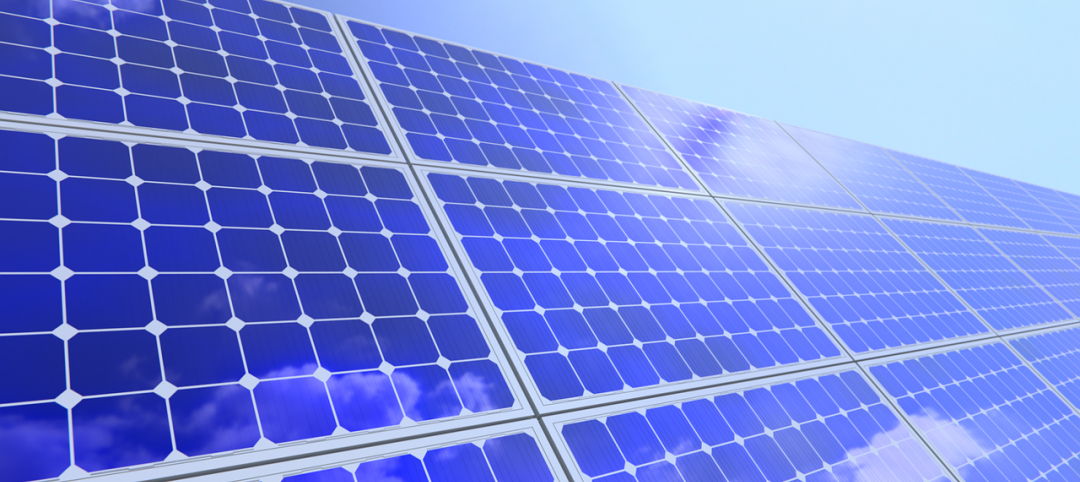Avoided energy use attributable to energy-efficiency investments undertaken since 1974 has resulted in a contribution outstripping the annual consumption of oil, natural gas, electricity, and coal, according to a report by the International Energy Agency, a global NGO.
An analysis of energy consumption in 11 IEA member countries indicates that avoided annual energy use in 2010 was 63 exajoules, or the equivalent of 1.52 billion tonnes of oil. This avoided energy use was larger than the countries' consumption of oil (43 EJ), electricity and natural gas (22 EJ each), and coal (less than 10 EJ).
The equivalent cost of oil for 63 exajoules of energy would have been about $420 billionUS. (Countries included in the analysis were Australia, Denmark, Finland, France, Germany, Italy, Japan, the Netherlands, Sweden, the United Kingdom, and the United States.)
Investments in energy efficiency measures have also reduced the amount of energy needed to produce each unit of gross domestic product, according to the report. As of 2011, total investment in energy efficiency resembled the supply-side investment in renewable or fossil-fuel electricity generation.
However, fossil-fuel development benefits from a much higher level of government subsidies than energy-efficiency measures. In 2011, fossil fuels were the recipient of more than $500 billion in global subsidies, compared with less than $100 billion in subsidies for renewable energy (below).
Table: Global investments and subsidy in selected areas of the energy system, 2011. Source: IEA.
The IEA indicates that governmental policy interventions are the most significant stimulant for energy-efficiency investments. High energy prices are also triggering expansion of the energy-efficiency market, though subsidies for fossil fuels continue to artifically reduce the price consumers pay for energy.
Performance improvements in buildings are targeted as an important factor in continued reduction of global energy use. The report discusses notable investments in this area by Germany, New Zealand, France, and Mexico, mainly involving residential construction.
For the medium term, the IEA predicts that private investment enabled by favorable government policies, rather than direct public investment, will continue to represent the greatest source of funding for energy-efficiency projects.
Influential changes in codes and standards in Canada, France, Germany, South Korea, China, Japan, and the U.K. should drive growth in the energy-efficiency sector. For the U.S., new standards for appliances and continued growth in the ESCO industry may be significant.
Continued savings should be possible during the next decade, according to the agency, perhaps amounting to about 7% of 2010's total global consumption--or greater than the combined current energy use of Australia, Japan, Korea, and New Zealand.
Click here for the full report.
The editors thank Grumman / Butkus Associates for bringing this report to our attention.
Related Stories
Daylighting Designs | Jul 9, 2021
New daylighting diffusers come in three shape options
Solatube introduces its newest technology innovation to its commercial product line, the OptiView Shaping Diffusers.
Education Facilities | Jun 4, 2021
Three ProConnect events coming this fall: Sustainability (Nov 2-3), Education (Nov 16-17), Multifamily (Dec 12-14)
SGC Horizon ProConnect 2021 schedule for Education, Multifamily, Office, and Single Family events.
Energy Efficiency | Mar 23, 2021
ASHRAE’s new headquarters walks the talk about net-zero energy
The conversion of a 1970s’-era building demonstrates how older structures can be made more efficient and sustainable.
Energy Efficiency | Nov 11, 2020
Has energy efficiency lost its mojo during the pandemic?
Two surveys found that, despite much lower occupancy rates, energy consumption in most commercial buildings didn’t decline.
Multifamily Housing | Sep 10, 2020
EV charging webinar to feature experts from Bozzuto, Irvine Company, and RCLCO - Wed., 9-16
EV charging webinar (9/16) to feature Bozzuto Development, The Irvine Company, RCLCO, and ChargePoint
Continuing Education and Life Time Learning | Apr 3, 2020
Online technical training sessions on tankless water heaters and boilers
Tankless water heaters and boiler training for plumbing contractors.
Green | Mar 9, 2020
BuroHappold commits to all new building projects achieving net-zero carbon by 2030
The engineering firm also launched a long-term partnership with ILFI.
Sponsored | HVAC | Feb 3, 2020
Reliable Building Systems Increase Net Operating Income by Retaining Tenants
Tenants increasingly expect a well-crafted property that feels unique, authentic, and comfortable—with technologically advanced systems and spaces that optimize performance and encourage collaboration and engagement. The following guidance will help owners and property managers keep tenants happy.
Building Technology | Jan 7, 2020
Tariff whiplash for bifacial solar modules
Bifacial solar systems offer many advantages over traditional systems.


